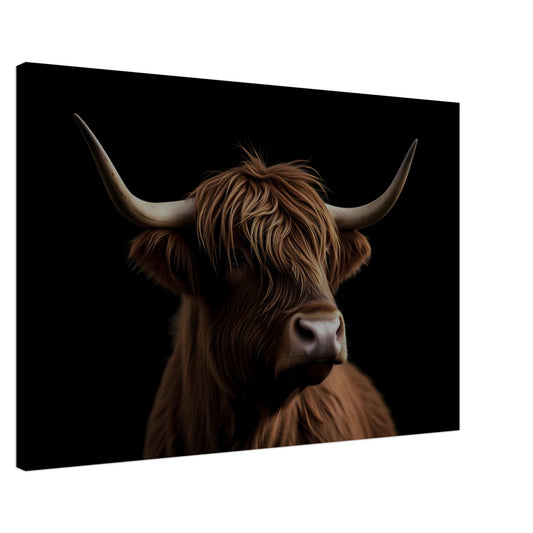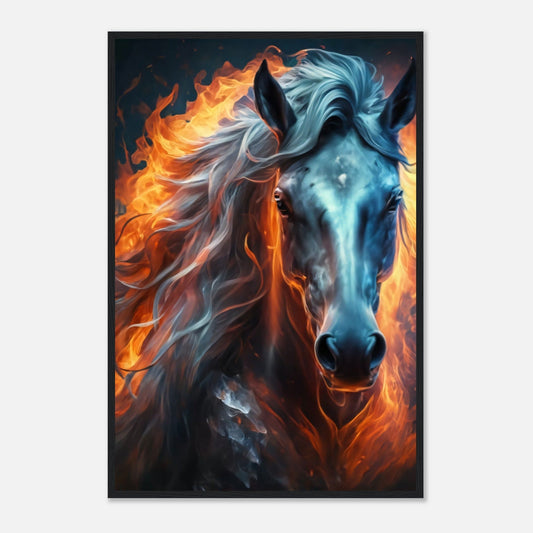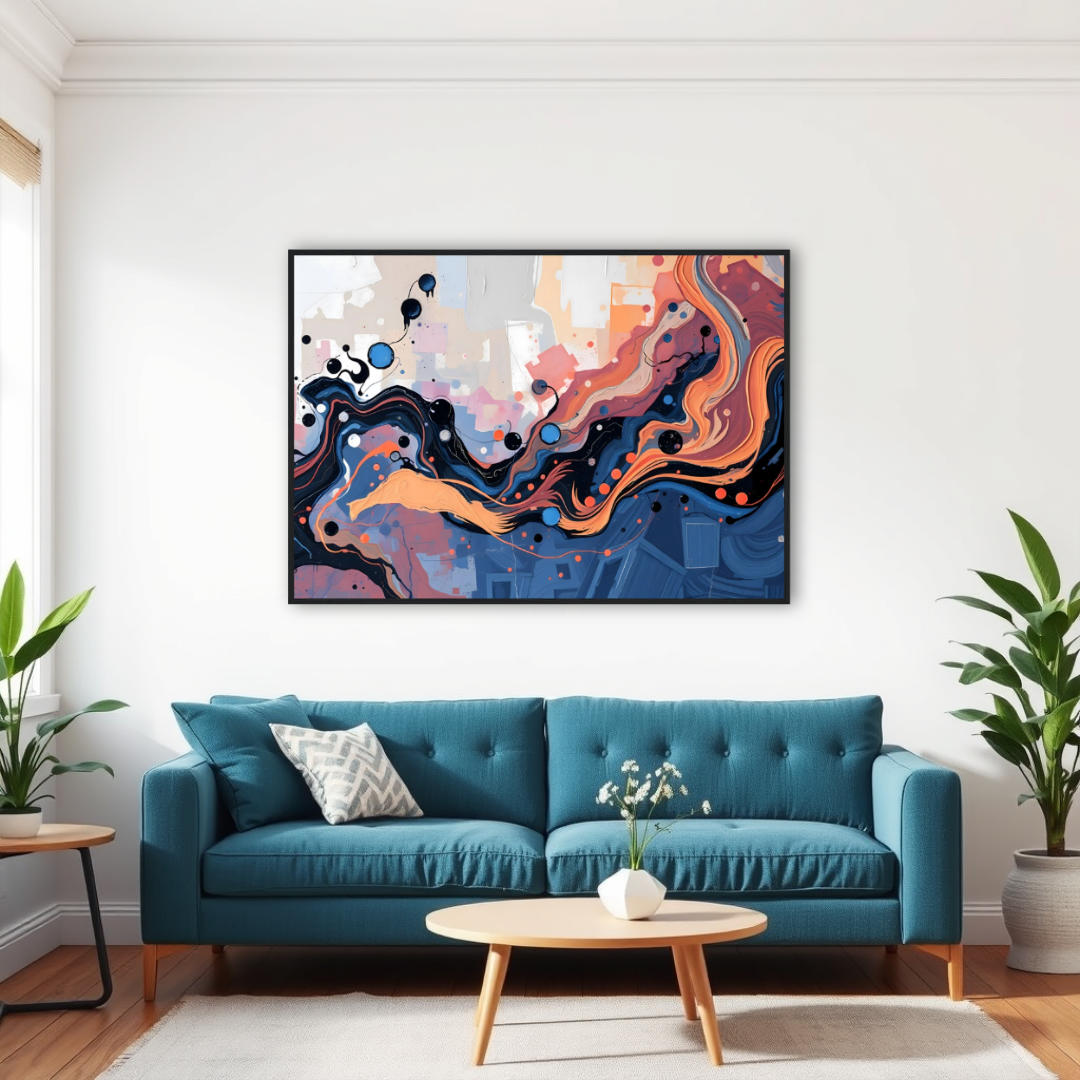In the realm of interior design, colors wield a powerful influence over our emotions, mood, and perception. Nowhere is this influence more apparent than in wall art, where the careful selection of hues can significantly impact the ambiance of a space. In this blog post, we will explore the captivating world of color psychology and its profound implications for wall art, discovering how different color choices can evoke diverse feelings and responses.
Understanding Color Psychology
Understanding Color Psychology is essential in comprehending the powerful influence that colors have on our emotions and behaviour. Delving into the realm of color psychology allows us to uncover the unique ways in which different hues can affect our mood, mental well-being, and even physiological responses. By gaining insight into the psychological effects of colors, we can make informed decisions when choosing colors for various settings, including wall art, to create spaces that resonate with people on a deep and emotional level. In this section, we will explore the fascinating world of color psychology and its implications for designing spaces that evoke specific emotions and perceptions.
What is Color Psychology?
Color psychology delves into the study of how colors can sway human behaviour, emotions, and mental well-being. Colors possess the unique ability to evoke distinct emotions and even elicit physiological responses from individuals.
The Psychological Effects of Colors
1. Red: A vibrant hue symbolizing passion and energy, red possesses the power to stimulate excitement and urgency. It can elevate heart rates and even arouse appetite.
2. Blue: Often associated with tranquility and calmness, blue is known to have a soothing effect on the mind and body. It can foster relaxation and reduce stress levels.
3. Yellow: Symbolizing happiness and positivity, yellow has the potential to uplift moods and boost creativity. However, excessive exposure to yellow can lead to feelings of anxiety.
4. Green: As nature's representative, green is refreshing and rejuvenating. It is renowned for instilling a sense of balance and harmony.
5. Purple: Signifying luxury and spirituality, purple can spark creativity and encourage a feeling of opulence.
6. Orange: Combining the energy of red and the joy of yellow, orange is an enthusiastic and adventurous color that can evoke excitement.
The Role of Wall Art in Influencing Mood
Wall art serves as an influential tool in setting the tone of a room and shaping the emotions of its occupants. If you have been to hospitals for examples, you will realize that the kind of wall art that they put up are for creating a cool and relaxed mood.
Choosing Calming Colors for Relaxation
Incorporating soothing colors such as soft blues, greens, and pastels in wall art can create a serene and tranquil ambiance, making them ideal for bedrooms and relaxation areas. Such colors work best in areas such as bedrooms.
Energizing Spaces with Vibrant Colors
Spaces that necessitate energy and stimulation, such as offices or gyms, can benefit from wall art featuring vibrant reds, oranges, or yellows, which can provide the necessary boost of vigour.
Fostering Creativity with Abstract Art
Abstract wall art, with its captivating mix of colors, can stimulate the imagination and encourage creative thinking, making it a perfect fit for art studios and other creative spaces.
Color Combinations and their Effects
Color combinations have a profound impact on the aesthetics and ambiance of any space. By skilfully blending different hues, designers can create harmonious or striking effects that influence our emotions and perceptions. Understanding the dynamics of color combinations allows for the creation of visually captivating environments that resonate with our senses. In this section, we will explore the art of combining colors and delve into how specific combinations can evoke various feelings and responses.
Harmonious Combinations
Incorporating analogous colors (colors next to each other on the color wheel) in wall art can create a sense of harmony and balance, adding a touch of elegance to any space.
Contrasting Combinations
By employing complementary colors (colors opposite to each other on the color wheel) in wall art, one can introduce a dynamic visual interest, imbuing the environment with excitement and vibrancy.
The Cultural Influence on Color Perception
Taking cultural backgrounds into consideration is crucial when using colors in wall art, as different cultures may associate varying meanings with certain colors. Understanding these nuances can help create a more inclusive and relatable environment.
Harnessing the Power of Neutral Colors
Neutral colors like white, beige, and grey can serve as a versatile canvas for other decorative elements in a room while still influencing the overall atmosphere. Their understated elegance can complement any design style.
Conclusion
The psychology of colors in wall art is a captivating subject that underscores the significant impact of colors on human emotions and perception. Whether you seek to create a tranquil sanctuary or an invigorating workspace, understanding color psychology can aid in selecting the perfect wall art to achieve your desired ambiance. So, the next time you embark on redecorating your living space, pay careful attention to the colors you incorporate into your wall art – you may be pleasantly surprised by the profound difference it makes in your mood and overall experience.
FAQs
1. Can wall art truly influence my mood?
Absolutely! Wall art can influence your mood by evoking specific emotions associated with different colors.
2. What colors should I avoid for a bedroom?
Avoid using bold and bright colors like red or neon hues, as they can be too stimulating for a bedroom and may hinder relaxation.
3. Can I mix different styles of wall art in one room?
Certainly! Mixing different styles of wall art can create an eclectic and visually appealing space, adding layers of personality to your decor.
4. What colors are best for a productive workspace?
Colors like blue and green can promote focus and productivity in a workspace, fostering a conducive environment for tasks and creativity.
5. Is color psychology a science or a belief?
Color psychology is a well-researched field with scientific evidence supporting its impact on human behavior and emotions.






